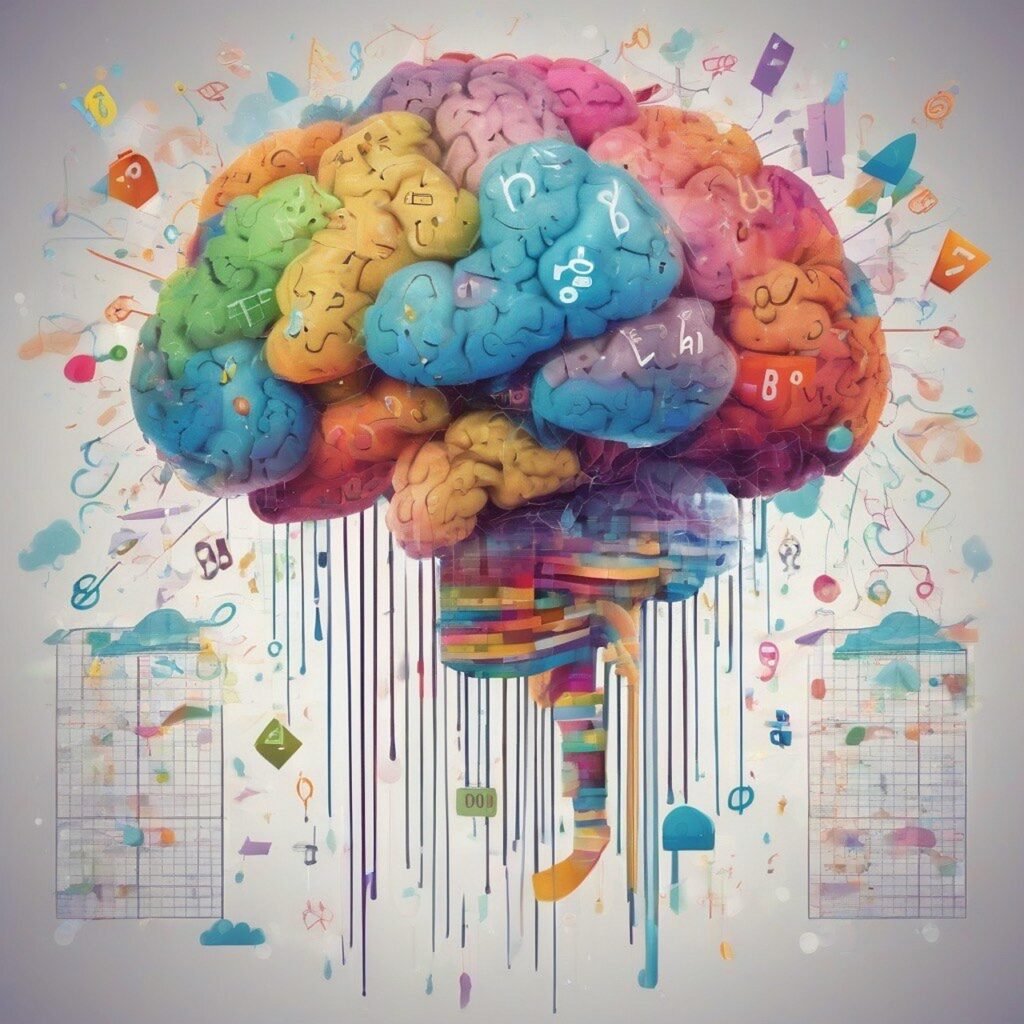Artificial Intelligence, or AI, is one of the most powerful technologies of our time. It is changing the way we live, work, and communicate. From using Google Assistant to getting movie suggestions on Netflix—AI is everywhere. But have you ever wondered how AI actually works?
In this blog, you’ll learn:
- What AI is
- How AI works step by step
- The technologies behind AI
- Where AI is used
- Benefits and challenges of AI
What is Artificial Intelligence?
Artificial Intelligence (AI) is the ability of machines or software to think, learn, and solve problems like humans. It allows computers to perform tasks such as understanding language, recognizing images, making decisions, and even driving cars.
Example: When you search something on Google, AI shows the most relevant results based on your previous searches.
How Does AI Work?
AI works in a series of steps. Let’s break them down in simple terms:
1. Data Collection
AI starts with collecting data. This data can be:
- Text
- Images
- Videos
- Numbers
- Audio
Example: To teach an AI to recognize cats and dogs, it needs to see thousands of cat and dog images.
2. Data Processing
Next, the data is cleaned and organized. The system removes any errors or unnecessary information to prepare it for training.
7 Effective Ways to Protect Yourself from Cyber Attacks
3. Choosing the Algorithm
An algorithm is a set of rules or instructions that help the AI learn. Based on the type of task, the right algorithm is selected.
Some popular AI algorithms:
- Decision Trees
- Neural Networks
- Random Forest
- Support Vector Machines (SVM)
4. Training the Model
The AI system learns from the data using Machine Learning (ML) or Deep Learning. It studies patterns and makes connections.
Example: If you show a picture of an apple and label it as “apple,” the AI learns its features—color, shape, size.
5. Making Predictions or Decisions
Once trained, AI can use new data to make decisions or predictions.
Example: An e-commerce website shows product recommendations based on your past purchases.
6. Feedback and Improvement
AI continues to improve through feedback. It learns from mistakes and becomes smarter over time.
This is called Reinforcement Learning or Self-Learning.
Technologies Behind AI
Here are the key technologies that make AI possible:
1. Machine Learning (ML)
ML helps machines learn from data without being directly programmed. Types of ML:
- Supervised Learning (with labeled data)
- Unsupervised Learning (no labels)
- Reinforcement Learning (learning from actions and rewards)
2. Neural Networks
Inspired by the human brain, neural networks help machines recognize patterns in data. They are the base of Deep Learning.
3. Natural Language Processing (NLP)
NLP allows AI to understand and respond to human language.
Examples: ChatGPT, Google Translate, voice assistants
4. Computer Vision
Computer vision allows AI to “see” and analyze images and videos.
Examples: Face recognition, object detection, medical image analysis
Where Is AI Used Today?
AI is being used in almost every industry. Here are some examples:
| Field | AI Applications |
|---|---|
| Healthcare | Disease detection, diagnosis, drug discovery |
| Finance | Fraud detection, chatbots, risk analysis |
| Education | Personalized learning, online exam evaluation |
| Transportation | Self-driving cars, traffic prediction |
| Entertainment | Netflix, YouTube recommendations |
| Security | CCTV monitoring, cyber threat detection |
| E-commerce | Product suggestions, dynamic pricing |
Common AI Tools & Apps
- Google Assistant / Siri / Alexa – Voice-based AI helpers
- ChatGPT – Smart chatbot for Q&A
- Tesla Autopilot – Self-driving technology
- Grammarly – AI-powered writing assistant
- Face ID – Unlock your phone with facial recognition
How ChatGPT and Similar AI Models Work
ChatGPT is a type of Language Model created by OpenAI. It uses a technique called GPT (Generative Pre-trained Transformer). Here’s how it works:
- It is trained on billions of texts from websites, books, and articles
- It learns grammar, meaning, and how words connect
- When you ask something, it gives a response based on what it has learned
Benefits of AI
- Speeds up tasks and saves time
- Reduces human error
- Helps in research and innovation
- Makes everyday tools smarter
- Boosts productivity in industries
Challenges of AI
- Job loss in some sectors due to automation
- Privacy issues (data misuse)
- Bias in AI decisions (if training data is biased)
- Hard to fully control or explain AI behavior
The Future of AI
AI will become more advanced in the future. We can expect:
- AI-powered doctors
- Smart education systems
- Fully self-driving vehicles
- Smarter homes and cities
However, it’s important to use AI responsibly and ensure it’s fair, safe, and transparent.
Artificial Intelligence is not magic—it’s data, algorithms, and learning. It allows machines to think and act smartly. Whether you’re using a smartphone, browsing the internet, or watching Netflix—AI is already a part of your life.
Learning how AI works can help you understand the digital world better and prepare for future technologies.
